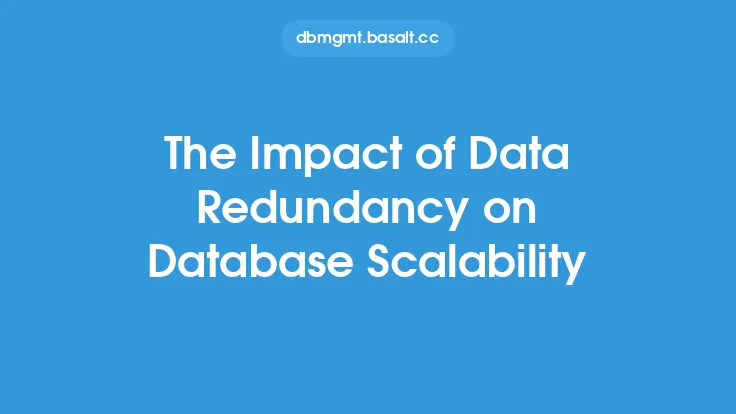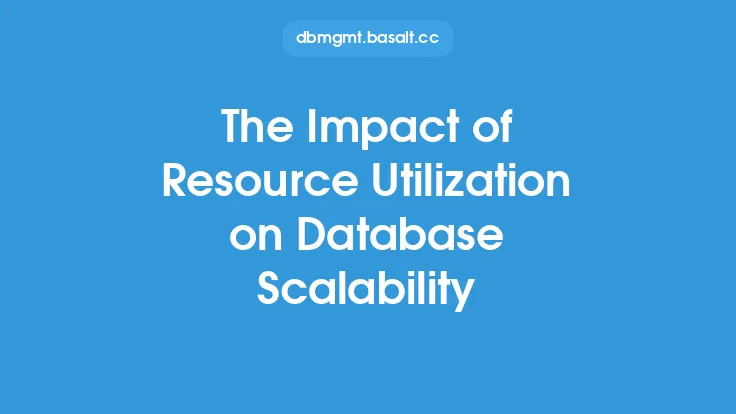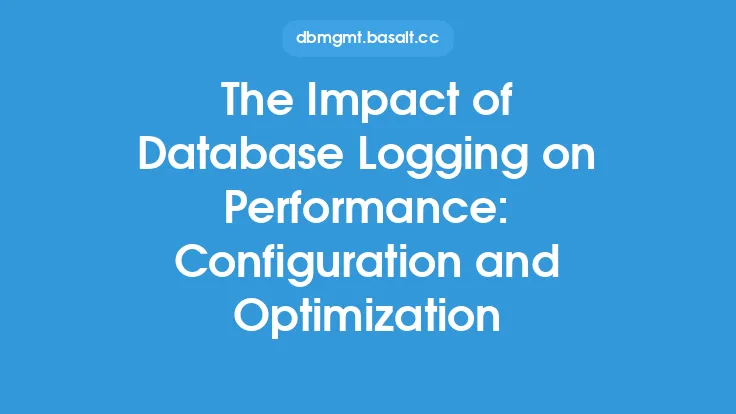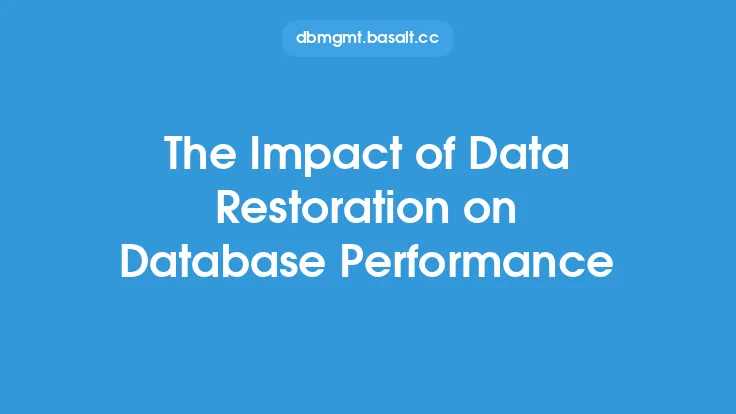The exponential growth of data in recent years has posed significant challenges to database scalability. As the amount of data being generated and stored continues to increase, databases must be able to handle the growing demands of data storage, processing, and retrieval. In this article, we will explore the impact of data growth on database scalability and discuss the various strategies and techniques that can be employed to ensure that databases remain scalable and performant in the face of growing data volumes.
Introduction to Database Scalability
Database scalability refers to the ability of a database to handle increasing amounts of data and user traffic without a significant decrease in performance. A scalable database is one that can adapt to changing demands and continue to provide fast and reliable access to data, even as the amount of data and the number of users grows. There are several factors that can impact database scalability, including data growth, user traffic, and query complexity. In this article, we will focus on the impact of data growth on database scalability and discuss the various strategies and techniques that can be employed to ensure that databases remain scalable and performant.
The Challenges of Data Growth
Data growth can pose significant challenges to database scalability. As the amount of data being stored in a database increases, the database must be able to handle the growing demands of data storage, processing, and retrieval. This can be particularly challenging for databases that are not designed to handle large amounts of data, as they may become slow and unresponsive as the amount of data grows. Additionally, data growth can also lead to increased storage costs, as more storage space is required to hold the growing amounts of data. Furthermore, data growth can also lead to increased complexity, as the database must be able to handle the growing demands of data processing and retrieval, while also ensuring data consistency and integrity.
Strategies for Handling Data Growth
There are several strategies that can be employed to handle data growth and ensure that databases remain scalable and performant. One strategy is to use data compression, which can help to reduce the amount of storage space required to hold the data. Another strategy is to use data partitioning, which can help to improve query performance by allowing the database to focus on specific subsets of data. Additionally, data archiving can also be used to help manage data growth, by moving infrequently accessed data to slower and less expensive storage devices. Furthermore, databases can also be designed to use distributed storage, which can help to improve scalability and performance by allowing data to be stored across multiple devices.
Database Design Considerations
When designing a database to handle data growth, there are several considerations that must be taken into account. One consideration is the choice of database management system, as different systems have different strengths and weaknesses when it comes to handling large amounts of data. Another consideration is the design of the database schema, as a well-designed schema can help to improve query performance and reduce storage costs. Additionally, the use of indexing and caching can also help to improve query performance, by allowing the database to quickly locate and retrieve specific data. Furthermore, the use of parallel processing and distributed query execution can also help to improve performance, by allowing the database to take advantage of multiple processing units and storage devices.
The Role of Storage in Database Scalability
Storage plays a critical role in database scalability, as it provides the foundation for storing and retrieving data. There are several types of storage that can be used in databases, including hard disk drives, solid-state drives, and flash storage. Each type of storage has its own strengths and weaknesses, and the choice of storage will depend on the specific needs of the database. For example, hard disk drives are often used for large-scale data storage, due to their high capacity and low cost. On the other hand, solid-state drives and flash storage are often used for high-performance databases, due to their fast read and write times. Additionally, storage area networks and network-attached storage can also be used to provide scalable and high-performance storage for databases.
The Impact of Data Growth on Query Performance
Data growth can have a significant impact on query performance, as the database must be able to handle the growing demands of data processing and retrieval. As the amount of data grows, queries may take longer to execute, and the database may become slow and unresponsive. To mitigate this, databases can use a variety of techniques, such as indexing, caching, and parallel processing, to improve query performance. Additionally, databases can also use query optimization techniques, such as rewriting queries and reordering operations, to improve performance. Furthermore, the use of materialized views and data warehousing can also help to improve query performance, by allowing the database to pre-compute and store frequently accessed data.
Best Practices for Ensuring Database Scalability
There are several best practices that can be employed to ensure database scalability. One best practice is to monitor database performance regularly, in order to identify potential bottlenecks and areas for improvement. Another best practice is to use automated testing and validation, in order to ensure that the database is functioning correctly and efficiently. Additionally, databases should be designed to be flexible and adaptable, in order to handle changing demands and requirements. Furthermore, databases should also be designed to be secure, in order to protect sensitive data and prevent unauthorized access. By following these best practices, databases can be designed to be scalable, performant, and reliable, even in the face of growing data volumes.
Conclusion
In conclusion, data growth can have a significant impact on database scalability, and it is essential to employ strategies and techniques to ensure that databases remain scalable and performant. By understanding the challenges of data growth, and by using strategies such as data compression, partitioning, and archiving, databases can be designed to handle growing amounts of data. Additionally, by considering database design, storage, and query performance, databases can be optimized to provide fast and reliable access to data, even as the amount of data grows. By following best practices and using the latest technologies and techniques, databases can be designed to be scalable, performant, and reliable, and to provide a foundation for supporting growing data volumes and user demands.





